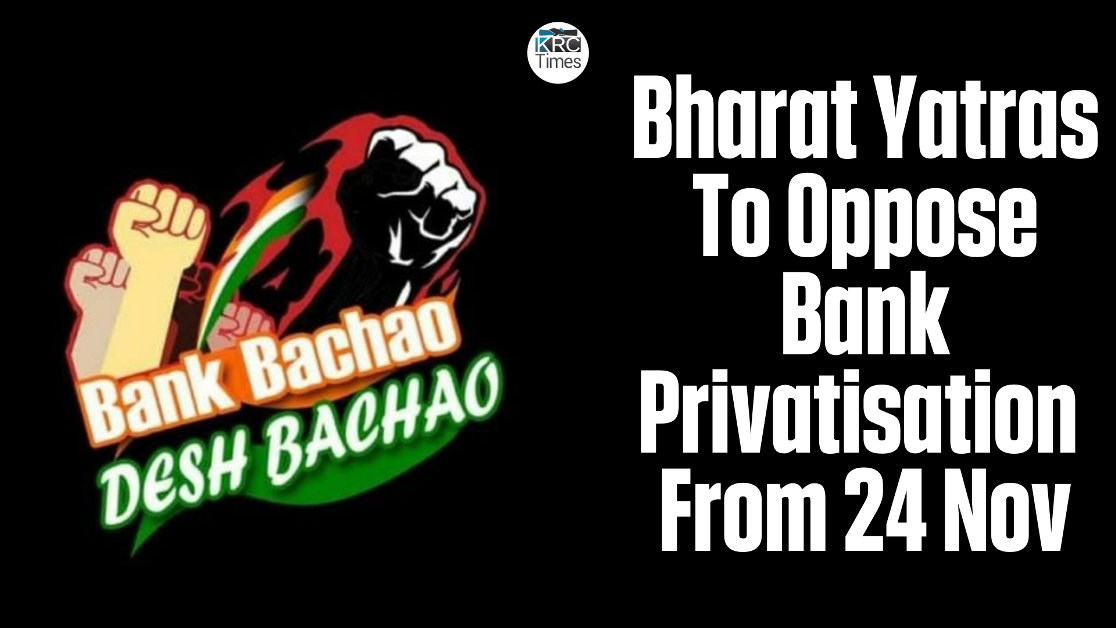Large sections of population squeezed out of credit market

At least one of the reasons cited by Finance Minister Nirmala Sitharaman while announcing the merger of public sector banks is untenable.
In what is considered as the second wave of the government’s efforts to revive the economy, Sitharaman announced a series of banking reforms, including merger of 10 public sector banks into four entities. These merged banks would lead to the creation of big banks with an enhanced capacity to give credit and would also be able to compete globally, she claimed.
But Indian banks competing in the global market is merely a pipe dream. In the first place, there is no need for them to compete in the global marketplace. More importantly, even the biggest Indian bank, State Bank of India, is nowhere near where it can be in the same league as JP Morgan Chase, Bank of America, Citi or even HSBC. A global Indian bank, as of now, is a misnomer, although a people, large enough as one-sixth of the world’s population, certainly deserve one.
The minister further claims that the merger will enhance the capacity of the banks concerned to increase credit disbursals. That presumption also needs to be proved, at least in the case of retail credit. It is often not the lack of capacity that deters banks from lending to retail credit seekers, but a skewed policy that always works in favour of the big-ticket borrowers.
There is no doubt that the first step to revive the economy, which is now in dire straits, is through raising demand at all levels, including retail. Lack of demand is not only slowing down the economy, but also affecting the investment outlook, as testified by Reserve Bank governor Shaktikanta Das at the meeting of the Monetary Policy Committee in the early part of August. From provision shopping to big-ticket spending, such as purchase of vehicles, customers simply do not have the money to buy.
Banks, by way of name lending as their best credit strategy, have burnt their fingers by amassing toxic assets, mostly on account of lending to projects and people of questionable credentials. In a knee-jerk reaction, they have suddenly applied the squeeze, crowding out ordinary borrowers from the credit market.
The automotive industry has been crippled and forced to lay off workers and cut production as inventories are building up at an alarming rate as there are no buyers. The lack of demand is not due to the disappearance of the aspirational market, which, given the present population profile, can only grow, but due to a total drying up of car finance. With banks strictly following the new norms of Credit Information Bureau (India) Ltd (CIBIL), it is virtually impossible to get a car loan these days for any customer with a certain exposure to banking credit.
There is an inherent contradiction in CIBIL’s approach as it applies first world standards to third world situations. Credit rating agencies need to go back to their learning to be able to come up with solutions that are applicable to the Indian context rather than copy paste the templates of western credit norms as there is a huge difference in awareness levels about personal creditworthiness in the mature economies.
In India the very concept of personal creditworthiness is yet to take hold and it would take years of educating and denial of credit for people to get used to the new idea. The arbitrary application of western standards has recast away large sections of Indian population from the credit universe.
And they include large numbers of youth, who have taken educational loans for their higher studies, but may have delayed or defaulted payments due to one reason or the other, without realizing that they have been shut out of bank credit for the rest of their lives. Under CIBIL’s blatantly arbitrary application of norms, even small deviations are blown out of proportion to spoil the credit records of affected people. Hardly do they realising that when they avail of educational norms, they are actually walking into a trap from which there is no escape whatsoever.
It is a hard fact of life that our credit seekers are not yet ready to the fancied western concepts of personal credit rating. This is specially so, when all the credit rating agencies have looked away when the big fish was simply eating away their nets and digesting them. While the government has been seriously looking at ways to revive the economy through all available means, including various stimulus packages, this aspect of the retail credit market needs to engage greater attention.
The problems of the retail credit market need to be studied in detail and remedies worked out. Also worth studying is the role of CIBIL in creating the current situation, where lack of demand is frustrating every effort to shore up the economy. Credit squeezes are often caused by the misdeeds of the big fish, but their worst victims are always small borrowers.



